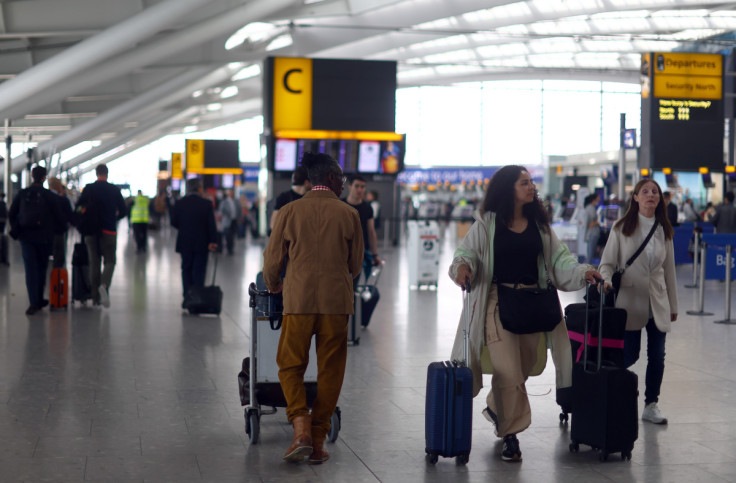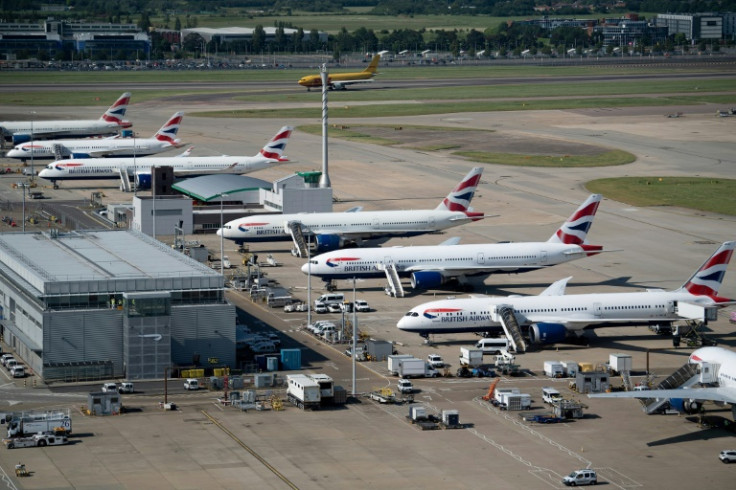London Airspace Closed Today: Heathrow, Gatwick, Birmingham, Manchester, and More Affected
London airspace was closed for over an hour due to a radar failure at NATS Swanwick control centre.

Air travellers on Wednesday witnessed chaos at London airport after a major technical failure forced air traffic controllers to shut down British airspace for over an hour, grounding flights at the height of the peak summer travel season.
The disruption, triggered by a 'radar failure' at NATS Swanwick air traffic control centre, paralysed operations at major airports including Heathrow, Gatwick, Birmingham, and Manchester, as well as regional hubs from Newcastle to Aberdeen.
A NATS spokesperson confirmed, saying: 'As a result of a technical issue at NATS Swanwick air traffic control centre, we are limiting the number of aircraft flying in the London control area to ensure safety, which is always our priority.'
'Our engineers have now restored the system that was affected this afternoon. We are resuming normal operations in the London area. We apologise for any inconvenience this has caused,' added the spokesperson.
Widespread Disruption at Major Airports

British Airways, which operates the bulk of flights in and out of Heathrow, said the 'vast majority' of its services had been affected.
'Like all airlines, we are dealing with the impact of an Air Traffic Control issue that is affecting the vast majority of our flights,' a BA spokesperson said. 'Whilst this is entirely outside of our control, we want to apologise to our customers for any inconvenience and assure them that our teams are working hard to get their journeys back on track as quickly as possible.'
Passengers across the UK reported lengthy delays, missed connections, and confusion as the air traffic control freeze rippled through the network. Jack Rickeard, a passenger on a Jet2 flight from Newcastle to Rhodes, said: 'The pilot has told us that we are likely to be delayed for at least three hours unless they can arrange an alternative route that avoids London airspace.'
The Scale of the Impact
Cirium, a leading aviation analytics firm, said there were 3,080 scheduled departures from UK airports today, accounting for more than 577,000 passengers. At the same time, a further 3,090 inbound flights were expected to bring in another 579,000 travellers. Although not all flights were affected by the outage, the timing—early afternoon—was critical.
According to Eurocontrol, the Europe-wide air traffic coordinator, the radar failure was 'isolated to the UK'. It prompted a blanket stop on all inbound flights to London airspace from 2:39 pm GMT. While the failure lasted just over an hour, officials warned that delays and cancellations would likely continue into the evening and potentially tomorrow.
A Flashback to 2023
The radar fault has drawn comparisons to a similar incident in August 2023, which occurred during peak summer travel and left more than 700,000 passengers stranded, costing the industry over £100 million.
An inquiry into the 2023 meltdown by the Civil Aviation Authority found that NATS had insufficient staffing for the scale of operations that day. Today's issue, though shorter, may carry similar consequences.
A senior source from Eurocontrol noted: 'We were told by British authorities to expect a 30 to 60-minute halt, which has since been lifted, but the knock-on delays will be significant.'
What Caused the Meltdown?
While the specific cause of today's radar failure has not yet been detailed, industry experts suggest a 'critical computer fault' may be to blame. A radar failure effectively blinds air traffic controllers, making it impossible to safely monitor aircraft positions in the sky—an unacceptable risk that triggers an immediate halt to flights.
FlightRadar24 data confirmed that planes already airborne continued landing, but new departures were restricted, and flights appeared to divert around London's airspace.
Travellers Urged to Check Flights
NATS and airlines are urging travellers to check with their carriers before heading to the airport. 'We continue to work closely with airline and airport customers to minimise disruption,' NATS said. 'Safety remains our top priority.'
The outage occurs just one day before August 1, 2025, forecast to be the busiest day for global air traffic this year, with one flight scheduled to depart every 0.75 seconds on average.
© Copyright IBTimes 2025. All rights reserved.





















